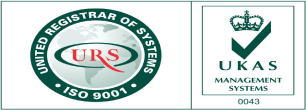


QForm Optimization in Cold and Warm Forging Simulation Analysis Software Solution and Services across India. Optimise the die assembly for longer tool life and to keep die deflection within tolerance. Develop optimal design of performing operations to fill the finish die without defects. Reduce contact stress and fracture probability Implementation of forging simulation software is especially important for the designing of unique technological processes of forging big ingots. In such processes it is necessary to analyze all aspects of the technology to reduce metal consumption as much as possible and ensure a high quality forging. Simulation of die stress-strain state in QForm for cold forming process. As opposed to hot forging, cold forming technologies yield a precise high-quality shape that reduces or eliminates the need for machining of the forged part. These are the main reasons to use cold forming technologies in technologies such as orbital forming, cold forging and cold upsetting of metalware (nuts, screws) and cold thread rolling. Special materials are used for cold forging that allow cold deformation without fracture. To simulate cold forming accurately it is necessary to use rheological models of materials which were tested at cold forging temperatures (in general 20 – 400 degrees Celsius). To evaluate fracture defects in cold forming simulations it is possible to implement criteria such as Cockcroft-Latham, V.L. Kolmogorov, Wierzbicki, Del, Johnson & Cook, McClintock, Rice and Tracy, V.A. Ogorodnikov, Yu.G. Kalpin in QForm. It is very important to take elastic deformation of the tool into account in cold forging processes because has a very big influence on the shape of the forged part. QForm takes elastic tool deformations into account with our specially developed models including: QForm is an indispensable tool for the development of hot bulk forging technological processes. The program allows simulation of metal flow in different dies on any kind of equipment to predict possible defects (non-filling of a die impression, laps, flow-through defect, etc.) The program shows temperature fields, the stress-strain state indicator in the forging and the tools as well as the fibrous microstructure and other parameters necessary for development of forging technology. The analysis of forging load and energy expended allows the selection of the optimal equipment. QForm allows an engineer to optimize the process avoiding defects, decreasing metal consumption and increasing productivity.Optimization in Cold and Warm Forging
Cold Forming
Hot forging
DDSPLM Private Limited is a leading engineering solution vendor with more than 25 years experience. DDSPLM is a Siemens Expert Partner and a trusted advisor for more than 700 customers from small to large across the different indutry verticals.

